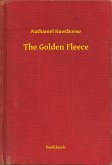The Cathedral was written in the year 1898 by Joris-Karl Huysmans. This book is one of the most popular novels of Joris-Karl Huysmans, and has been translated into several other languages around the world.
This book is published by Booklassic which brings young readers closer to classic literature globally.
This book is published by Booklassic which brings young readers closer to classic literature globally.
Dieser Download kann aus rechtlichen Gründen nur mit Rechnungsadresse in A, B, BG, CY, CZ, D, DK, EW, E, FIN, F, GR, H, IRL, I, LT, L, LR, M, NL, PL, P, R, S, SLO, SK ausgeliefert werden.









